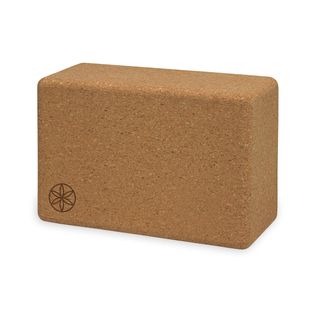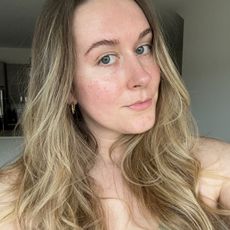These Relaxing Yoga Poses May Actually Help You Fall Asleep Tonight
- REVIEWS
- SEPTEMBER 16, 2021
These Relaxing Yoga Poses May Actually Help You Fall Asleep Tonight
by Lindy Segal
Table of Contents
- Why Is Yoga Good Practice for Sleep?
- What Yoga Poses Should You Do Before Bed?
- How Breathing Can Help You Fall Asleep
- When to Practice Yoga to Help With Sleep
Sleep is fundamental to our lifestyles, yet so many of us have trouble falling (and staying) asleep. According to the Sleep Foundation, about 1/3 of adults suffer from sleep deprivation, while another 10%–30% have chronic insomnia. Everything from CBD to meditation apps and aromatherapy has been floated as answers to our collective sleep deprivation problem.
But one potential solution may hold the key to loosening the tension, clearing the mind, and actually allowing us to slip into dreamland: yoga. For a (very) quick history lesson: The centuries-old wellness philosophy originated in India, and although it’s often used as shorthand for vinyasa yoga (which involves moving from pose to pose in a "flow”), yoga itself is actually an umbrella of practices, many of which can help the body feel more relaxed and calm. And there is plenty of research that shows it may be beneficial for both falling asleep and getting a night of more restful sleep, too.
Now, before you head into a downward-facing dog, it’s important to do a little homework. (We promise, it’s the most relaxing research you’ll ever do.) We spoke to Kala MacDonald, a Los Angeles–based private yoga and wellness coach and the president and founder of Yoga to Cope, as well as Charlotte Muller of Breathe Strength in New York, to find out why yoga is so helpful for sleep, the best poses to do at bedtime, and more. Light a candle, grab some comfy props, and get ready to enjoy your best night of rest in ages.

Credit: @breathe_strength
Why Is Yoga Good Practice for Sleep?
Think of yoga as a reset for your body and mind every night before you get into bed. "Doing yoga is one way to connect to the parasympathetic state—that feeling of restfulness, calm, ease, relaxation, and safety,” explains Muller. "We live in such a ‘go, go, go’ time period, and many people are stuck in ‘fight or flight’ mode. By breathing deeply and connecting to our bodies, we allow that stress response to dissipate and invite more calm in, which is extremely important when it comes to falling asleep.” MacDonald agrees but adds that it’s not a cure-all. "I hesitate to state that yoga is a ‘cure’ for sleep issues including insomnia, but I do believe it’s completely fair to say that yoga is a great practice for better sleep, and certainly can be great for relieving some symptoms of insomnia,” she says.
Certain types of yoga may be helpful when it comes to rest in particular. "Restorative yoga and yoga Nidra are two types of yoga that can help with falling asleep,” explains Muller. "Restorative yoga is the use of props and gravity to passively stretch. In a typical class, you will do around 5–6 poses, spending an average of anywhere from 3–8 minutes in each pose. Blankets, pillows, bolsters, and blocks help make each pose comfortable and sustainable,” she explains, adding that "Some people even refer to restorative classes as ‘nap time’—that’s how relaxing it can be.”
Yoga Nidra, on the other hand, is essentially a guided meditation. "Yoga Nidra is also known as ‘yogic sleep.’ It is usually taught by having students lie down, either in a restorative yoga pose or flat on their backs,” explains Muller. Even better, she says "This practice even helps the body release melatonin!”

Credit: @yogawkala
What Yoga Poses Should You Do Before Bed?
According to MacDonald, "The most calming, grounding, introverting type of yogasana, or ‘yoga poses’ would be forward folds. That is, any body position where the spine is in flexion, meaning the front upper body is coming closer to the front lower body.” Here are some poses recommended by MacDonald and Muller…
- Standing or seated forward fold: Stand with feet hip-width apart, or otherwise to your comfort level, or sit comfortably. Allow the fold forward to happen one vertebra at a time, beginning with a gentle tuck of the chin to the chest as the head begins to fall forward any amount. If you are standing and have the flexibility, this may mean you end up completely inverted, with the head hanging near the knees and the abdomen making contact with the thighs. "This won’t be accessible or comfortable for all, nor is it necessary!” says MacDonald. Fold forward any amount, to your individual comfort level, and be sure to make use of cushions or other comfort props as you may like for support so you can truly relax and release into the fold. If you are standing, ensure there is always at least a micro-bend in the knees, if not a big bend of the knees, to avoid locking or hyperextension at the joint. To leave the fold, with control, begin to roll up as you rolled down, stacking one vertebra at a time until the spine is tall, with the head and shoulders stacked atop the hips.
- Child’s pose: Bring your knees apart and toes together as you sit your hips back and stretch your arms forward on the mat. Let your forehead rest on the mat or a pillow. Try to stay there for 3-5 minutes. "This pose is especially good for upregulation—feeling mentally scattered or anxious—because it helps ground you down,” explains Muller.
- Head rolling: Standing or seated, allow the chin to gently tuck toward the chest while the rest of the spine remains tall and supported. "AKA Don’t entirely fold forward, only the head and neck move,” says MacDonald. With your chin guiding the way, move the head toward the left, bringing the left ear toward the left shoulder. Stay as long as you’d like, and when ready, allow the chin to guide the head and neck back through the center, and then to the right, with the right ear moving toward the right shoulder. Continue to move back and forth, side to side, with the chin guiding the movement of the head and neck. To finish, even yourself out and then bring the chin back down through the center. Finally, imagine stacking the cervical (upper) spine vertebrae one at a time until the head is once again stacked on the shoulders.
- Legs up the wall: Lie on your bed or the floor with your legs (you guessed it!) up the wall. "This pose helps the body feel relaxed. Try it for five minutes and see how it feels,” says Muller.
- Reclined bound angle: Lie on your back with your arms outstretched on an inclined pillow or bolster with the soles of your feet together and your knees apart. Place pillows or blocks under the knees for support, and remain here for 5–10 minutes. "This pose opens up the heart and hips while giving you the support you need to feel relaxed,” says Muller.
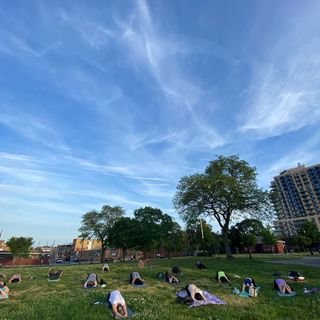
Credit: @breathe_strength
3. How Breathing Can Help You Fall Asleep
In addition to yoga poses, both Muller and MacDonald maintain that breathing techniques are one of the best tools you can use for relaxation. "The breath is just as, if not more, important than the physical shape, and can alone be just as effective at shifting you from day mode to night mode,” says MacDonald. Below are three techniques to try:
- A balancing 1:1 breath: This means the inhale is equal to the exhale. "Perhaps to a count of 3:3, and then try to grow your ratio to 4:4, 5:5, and so on,” says MacDonald.
- An extended 1:2 exhale: Try inhaling for two counts and exhaling for four for a few rounds of breath. "As you’re comfortable, grow your tide of breath to 3:6, 4:8, and so on, only as much as you’re able to do without strain or stress,” recommends MacDonald. "Remember, the goal is to relax into a blissful, restful sleep, not to push yourself to any sort of limit or maximum!”
- Alternate nostril breathing: Sit up or lie on your side as you use your hand to breathe in through one nostril and out through the other. "This practice stimulates the vagus nerve and slows down the breathing, which slows down the heart rate, which leads to relaxation,” explains Muller.
4. When to Practice Yoga to Help With Sleep
As you might expect, practicing as you get ready for bed should do the trick. "Use these poses as bedtime approaches; ideally as the last activity before sleeping and after devices have been set for the morning and put away,” says Muller. And MacDonald even recommends putting your phone on airplane mode to tune out distractions. "It would be dreamy—pun intended—if you could plug in your phone, set your alarm, and turn the device to airplane mode 15–30 minutes before your intended bedtime,” she says.
How long your practice is, however, is up to you and you alone. "The length of the session depends on each individual and on the day that they've had,” says Muller. "Sometimes just five minutes of legs up the wall helps, and other times, an entire 60-minute session of yoga Nidra is required.” Even one minute of thoughtful breathing can help you wind down. "I am a big proponent of the notion that a yoga session can be as brief as one minute or as long as a person may like,” says MacDonald. "Even just taking a few short minutes just before getting under the covers to be in a forward fold and breathe can and will have an effect on your sleep, so don’t feel like you’re letting yourself down if you only have the capacity to take three minutes for yourself some days.” If there’s one takeaway, says Muller, it’s to "always listen to the body and meet yourself where you are.”
Shop Our Favorite Yoga Items
Up Next: Is the Hypervolt Massager Really Worth the Splurge?
Disclaimer
This article is provided for informational purposes only and is not intended to be used in the place of advice of your physician or other medical professionals. You should always consult with your doctor or healthcare provider first with any health-related questions.
Lindy Segal is a freelance writer, editor, and content strategist based in New York City. She's originally from Atlanta, but she's sorry to report she doesn't have an accent. However, she does still have her taste for carbohydrates, love of losing sports teams, and fear of driving during rush hour. She's been in editorial for over eight years as a social media manager and writer covering beauty, fashion, and lifestyle at Glamour and People. Most recently, she was the women's editor at Express. These days, in addition to Who What Wear, you can see her byline at places like Harper's Bazaar, Cosmopolitan, Ipsy, and WeWork. Both a skincare obsessive and a minimalist, she keeps her routine short, sweet, and effective—and she doesn't go a day without sunscreen. She's also deeply passionate about sustainability, and she strives to recommend products she truly believes are worth the investment. When she's not writing about the best and brightest beauty finds, she can usually be found hunting for vintage and secondhand treasures, attempting to find zen at a yoga class, bingeing Bon Appétit YouTube videos, or napping under her weighted blanket.
-
 NGL, I Always Get Compliments When I Wear This Brand to My Workout Classes
NGL, I Always Get Compliments When I Wear This Brand to My Workout ClassesYou just have to see the new collection.
By Emma Walsh
-
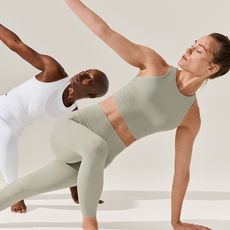 I Live for Yoga and Pilates—These Are the Pieces That Help My Flow
I Live for Yoga and Pilates—These Are the Pieces That Help My FlowTake notes.
By Humaa Hussain
-
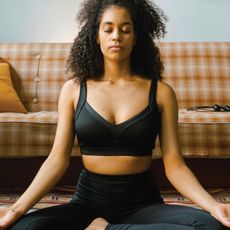 It's Time to Get Our Nutrition in Check for Summer—This App Is Making It Easy
It's Time to Get Our Nutrition in Check for Summer—This App Is Making It EasyThe recipe ideas are endless.
By Who What Wear
-
 If You're Battling With Digestive Issues, This Could Be Why
If You're Battling With Digestive Issues, This Could Be WhyTurns out, you may not have IBS after all.
By Kia Topps
-
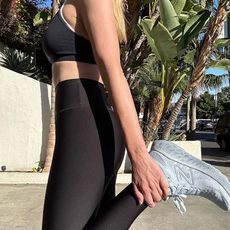 Our Editors Own a Lot of Sneakers, But This Pair Comes in First Place Every Time
Our Editors Own a Lot of Sneakers, But This Pair Comes in First Place Every TimeA major win.
By Aniyah Morinia
-
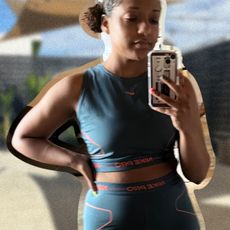 I Changed My Mind About Strength Training When I Tried This Workout
I Changed My Mind About Strength Training When I Tried This WorkoutMy confidence is officially on 10.
By Kia Topps
-
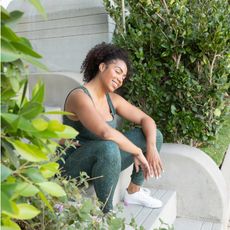 This Type of Gear Will Take Your Workout to the Next Level
This Type of Gear Will Take Your Workout to the Next LevelBring it on.
By Sarah Yang
-
 6 Essential Oils That Will Heal Your Painful Sunburns
6 Essential Oils That Will Heal Your Painful SunburnsAll-natural relief ahead.
By Samantha Parsons


